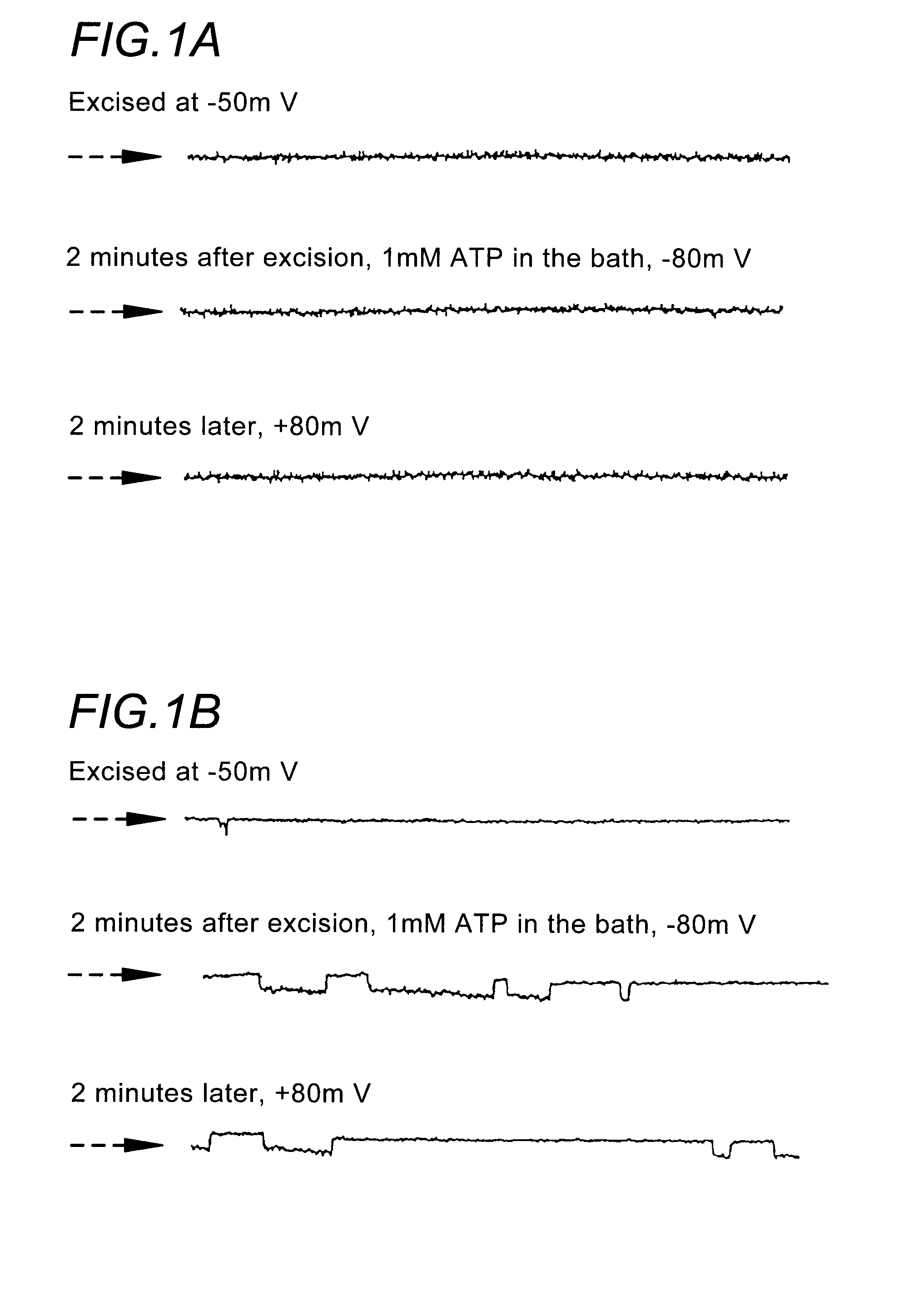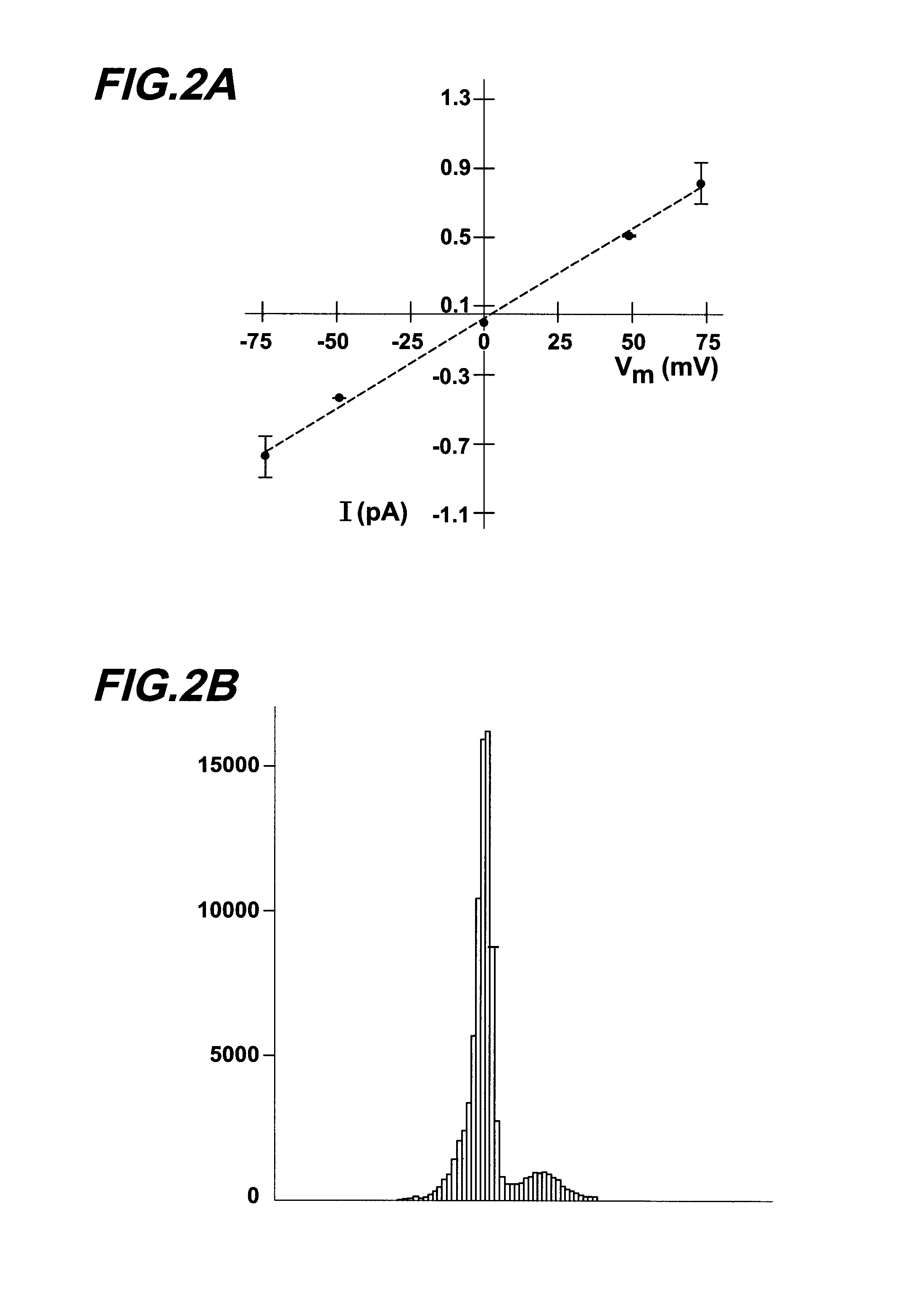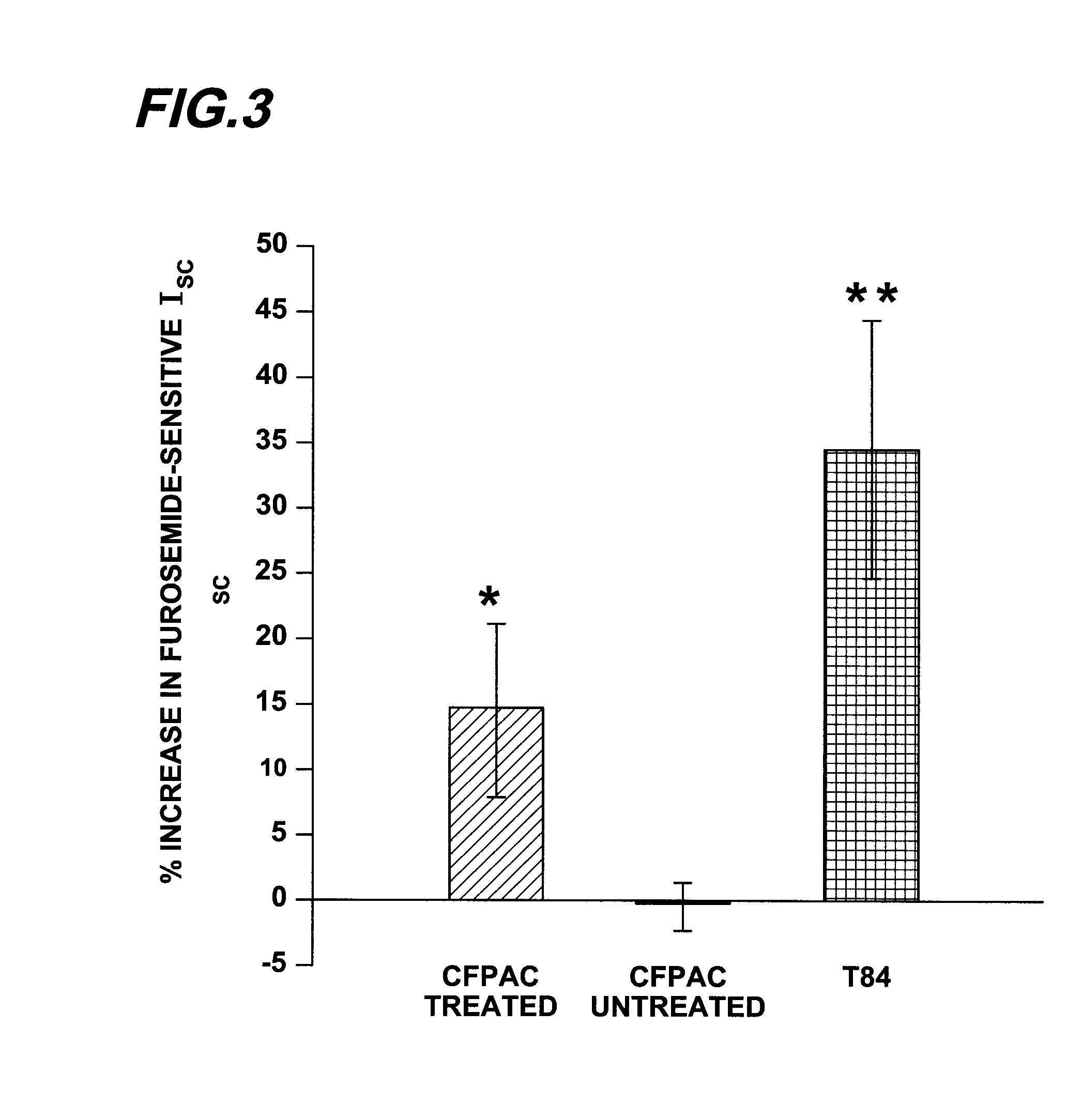Conductance of improperly folded proteins through the secretory pathway and related methods for treating disease
a technology of secretory pathway and protein, applied in the direction of drug composition, dispersed delivery, aerosol delivery, etc., can solve the problems of abnormal concentration of sweat, impaired pancreatic and digestive function, and chronic respiratory infections
- Summary
- Abstract
- Description
- Claims
- Application Information
AI Technical Summary
Benefits of technology
Problems solved by technology
Method used
Image
Examples
examples
[0207]The following working examples which disclose effects of thapsigargin or curcumin treatment in vitro and in vivo in cell lines and / or in a mouse model of cystic fibrosis specifically point out certain embodiments of the present invention. These examples are not to be construed as limiting in any way the scope of the invention. Other examples involving ER chaperone and UGGT regulation as well as other proteins that regulate intracellular targeting of mis-folded proteins will be apparent to the skilled artisan. Assays analogous to those described below can be utilized in examining other agents that regulate UGGT or other proteins that regulate mis-folded proteins.
Tissue Culture / Cell Lines
[0208]IB3-1 (Zeitlin et al., 1991) and CFBE290− (Kunzelman et al., Am. J. Resp. Cell. Mol. Biol. 8:522-529. (1993)) cells are CF-affected airway epithelial cell lines. Both IB3-1 and CFBE290− are immortalized, well-characterized human bronchial epithelial cell lines derived from CF-patients. The...
experiment 1
Analysis.
[0212]Materials and Methods. Single channel patch clamp studies were performed using conventional procedures on the CF-affected bronchial epithelial cell lines, IB3-1 and CFBE290− (Egan et al., Am. J. Physiol. 268:C243-C251 (1995)). Cells were grown in culture flasks on glass chips coated with collagen (150 ug / ml), fibronectin (10 ug / ml), and bovine serum albumin (10 ug / ml).
[0213]When cells were at 75% confluence they were incubated with 1 uM thapsigargin (or vehicle alone) for 1.5 hours at 37° C. using the following protocol. First, the LHC-8 media or DMEM was removed from the tissue culture dish and the cells were rinsed with phosphate buffered saline. Fresh LHC-8 media containing 1 uM thapsigargin was added to the cell culture dish. After the 1.5 hour thapsigargin exposure, cells were rinsed with fresh media and allowed to incubate for 2 hours at 37° C. prior to patch clamping. The patch clamp bath solution contained (in mM) 150 NaCl, 2MgCl2, 1 EGTA, 5 HEPES, and 0.5 CaC...
experiment 2
t Current Measurements.
[0221]Materials and Methods. CFPAC-1 or T84 cells were grown on collagen coated permeable supports (Transwell Snapwell filter cups, Corning Costar, Cambridge, Mass.). Cells were fed every one to two days from the basolateral surface of the monolayer while the apical surface was exposed to the humidified 5% CO2 environment. Filters were cultured until a tight monolayer was achieved.
[0222]Prior to electrical studies some of the monolayers were treated with 1 uM thapsigargin using the following protocol. Culture media containing 1 uM thapsigargin was added to the apical surface of the monolayer and incubated for 1.5 hours at 37° C. Cells were then rinsed with fresh thapsigargin-free media and allowed to incubate for 2 hours at 37° C., after which they were used for Ussing chamber studies. The Ussing chamber bath solution was a nominally bicarbonate-free Ringer's solution that was composed of (in mM) 140 NaCl, 1.2 MgCl2, 5 K2HPO4, 0.5 KH2PO4, 5 HEPES, 1.2 CaCl2, a...
PUM
| Property | Measurement | Unit |
|---|---|---|
| voltage | aaaaa | aaaaa |
| voltage | aaaaa | aaaaa |
| voltage | aaaaa | aaaaa |
Abstract
Description
Claims
Application Information
 Login to View More
Login to View More - R&D
- Intellectual Property
- Life Sciences
- Materials
- Tech Scout
- Unparalleled Data Quality
- Higher Quality Content
- 60% Fewer Hallucinations
Browse by: Latest US Patents, China's latest patents, Technical Efficacy Thesaurus, Application Domain, Technology Topic, Popular Technical Reports.
© 2025 PatSnap. All rights reserved.Legal|Privacy policy|Modern Slavery Act Transparency Statement|Sitemap|About US| Contact US: help@patsnap.com



